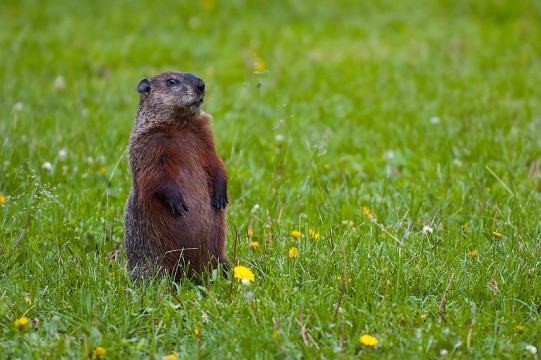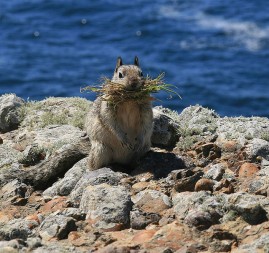
Groundhog Day seems mostly an East Coast event with most of the action centered in Pennsylvania. In a land of biting wind, bitter cold and snow, Punxsutawney Phil emerges every year on Feb. 2 to predict how much longer winter will maintain its icy grip on the country. Lore has it if he sees his shadow, winter has six more weeks of bad weather and Phil returns to hibernation. If it’s cloudy, then he assumes spring is near and remains above ground. There are a couple of fun websites to see his predictions over the years and you can even learn the official Groundhog Day song (sung to the tune of “Oh Tannenbaum,” which is fitting as this Groundhog Day tradition is traced back to ancient German roots).
We have our own, less famous, weather prognosticators on our relatively balmy West Coast: the ground squirrels. Groundhogs and squirrels are both in the same family of rodents called “Sciuridae.” All groundhogs, marmots, and ground squirrels are capable of hibernation, which enables them to survive winters when food is scarce and temperatures plummet. Hibernation is like suspended animation, the animal’s breathing and heart rate radically slow and their body temperature drops to nearly the same as their underground burrow. Ground squirrels in our area spend more time sleeping in winter, with some adults possibly hibernating. Definitive research about the hibernation of our local squirrels has been hard to come by – anyone need a graduate student project? Today as I walked the Bay Trail at Crown Beach, even though the sun was out, I only spotted four adult ground squirrels. In the spring, there will be hundreds.

You may be wondering how ground squirrels, so common in open areas yet seldom seen in cities (don’t confuse them with the non-native tree squirrels) fit in the ecology of our area. There’s a great article in Bay Nature online that explains their vital role in grassland ecosystems and provides a wonderful illustration of their burrow system along with a fascinating account of their co-evolution and adaptation to avoiding rattlesnakes.
My research also revealed a problem that needs our attention. We need to avoid using rodenticides to control ground squirrels - and rats. The problem is the poison is also deadly to raptors, hawks, foxes, and coyotes, which eat the poisoned rodents, and kills them through secondary poisoning. This reduces the predators, which could be helping us by eating our pest species, and causes us to use even more poison to keep the pests in check. Does this sound like a vicious cycle? Next time you’re out hiking in the grasslands or along a rocky shoreline, watch for these entertaining, important animals and, if you’re out on Feb. 2nd see if you can predict our own winter weather with their presence or absence.